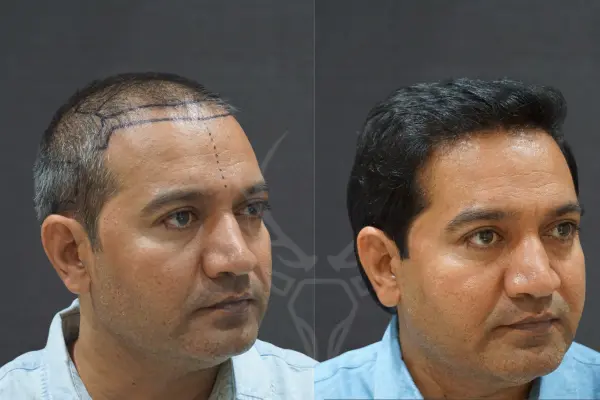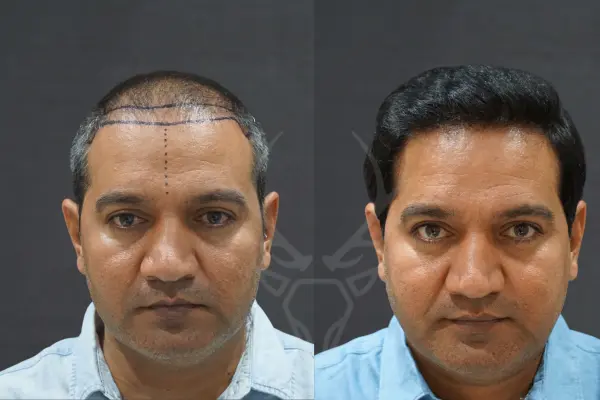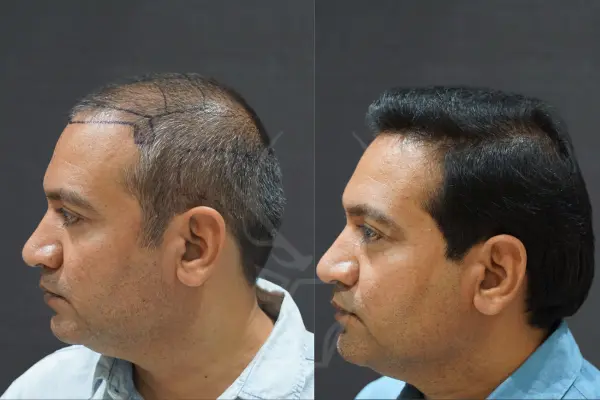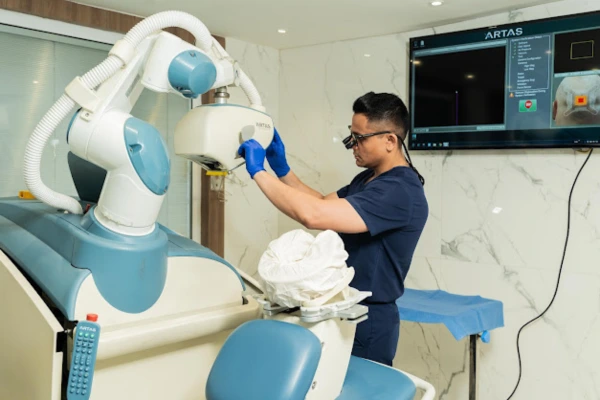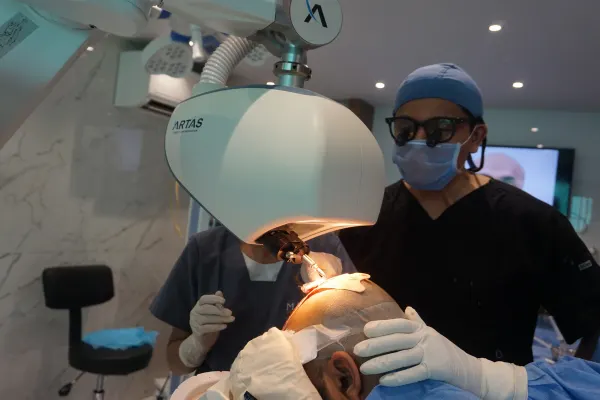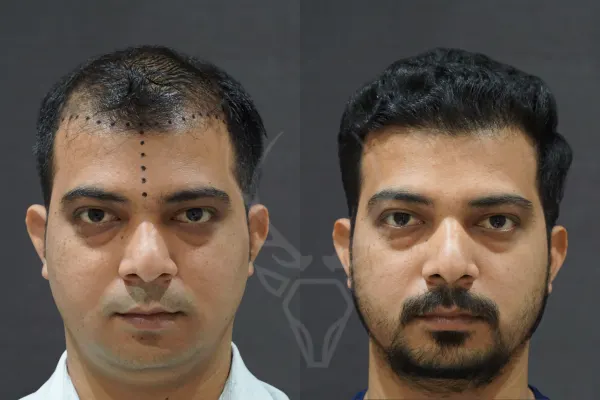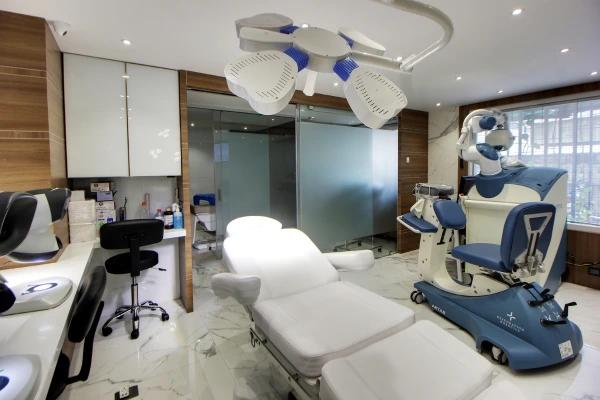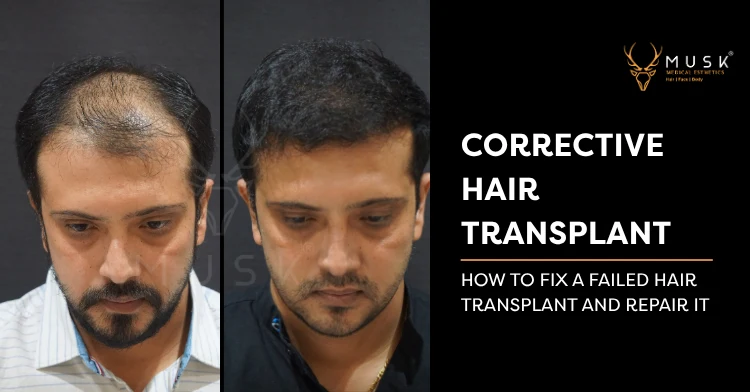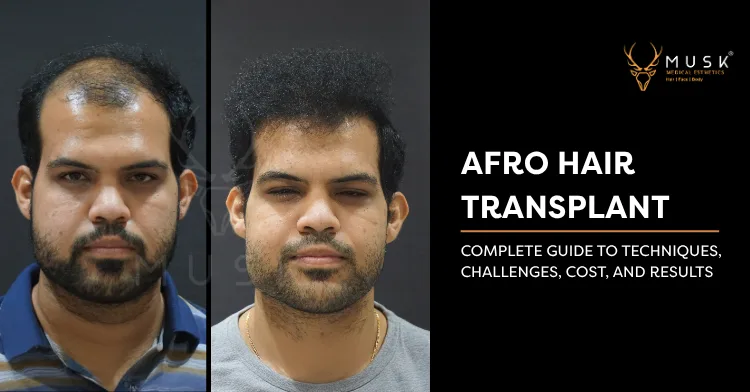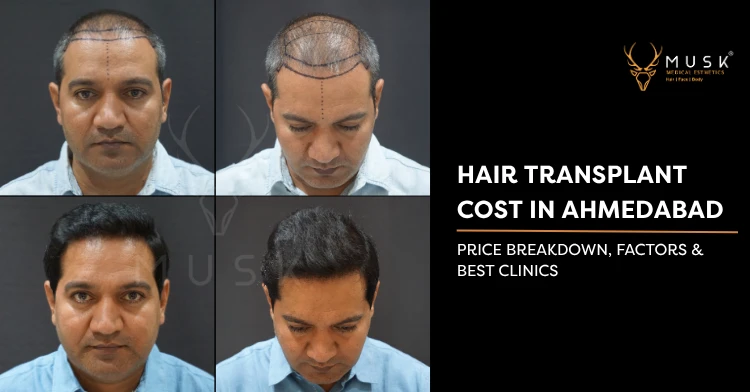Hair Transplant Repair in India
What is a Hair Transplant Repair?
A hair transplant repair is a specialized corrective procedure designed for individuals who are unsatisfied with the results of a previous hair transplant performed elsewhere. It addresses and rectifies issues such as unnatural-looking hairlines, poor density, visible scarring, or incorrect hair placement.
This advanced surgery requires a high level of skill to revise the previous work and achieve the desired aesthetic outcome. In India, hair transplant repair is sought by patients looking for an expert surgeon to fix a "botched" procedure and deliver a natural, seamless result.
The ultimate goal of a repair is to transform a disappointing outcome into a successful one, restoring not only a natural appearance but also the patient's confidence.
Before & After Images (Hair Transplant Repair)
What are the Benefits of Hair Transplant Repair?
A hair transplant repair offers a second chance at achieving the results you originally hoped for, providing numerous corrective and aesthetic benefits:
Corrects Unnatural-Looking Hairlines
An expert surgeon can redesign and soften a harsh, pluggy, or poorly positioned hairline, creating a more natural and age-appropriate frame for your face.
Natural-Looking Results
Skilled surgeons precisely place each hair follicle to mimic natural growth patterns, ensuring the new hairline is completely undetectable and integrates seamlessly with your traits.
A Permanent, Corrective Solution
By using genetically resistant follicles, the repair provides a final, lifelong solution that corrects the mistakes of the past and allows you to move forward with confidence.
Restores Natural Density
The procedure adds fullness to areas that were left sparse or thin from the previous transplant, ensuring a more uniform and dense look across the scalp.
Improves Hair Direction and Angle
A key part of the repair is correcting grafts that were placed at the wrong angle, ensuring the new hair grows in a natural direction that Integrates seamlessly with existing hair.
Boosts Confidence and Satisfaction
The most significant benefit is the emotional relief of finally achieving the natural-looking results you wanted, allowing you to stop feeling self-conscious about a poor transplant.
Informative Videos about Hair Transplant
Who Is an Ideal Candidate for Hair Transplant Repair?
The best candidates for a hair transplant repair are individuals who are in good health but are unhappy with a previous procedure and have realistic goals for improvement.
To be considered an ideal candidate, you should generally meet the following criteria:
- Sufficient Remaining Donor Hair : You must have an adequate supply of healthy hair follicles in your donor area that can be harvested for the corrective procedure.
- Unsatisfactory Previous Results: You are a candidate if you have specific, identifiable issues from a prior transplant, such as an unnatural hairline, visible scars, low density, or "pluggy" looking grafts.
- Good Overall Health : Being in good physical health is essential to ensure a safe procedure and a smooth, predictable recovery with minimal risk of complications.
- Realistic Expectations for Improvement : It is crucial to understand that the goal is to achieve significant cosmetic improvement. A detailed consultation will help you understand what can realistically be achieved.
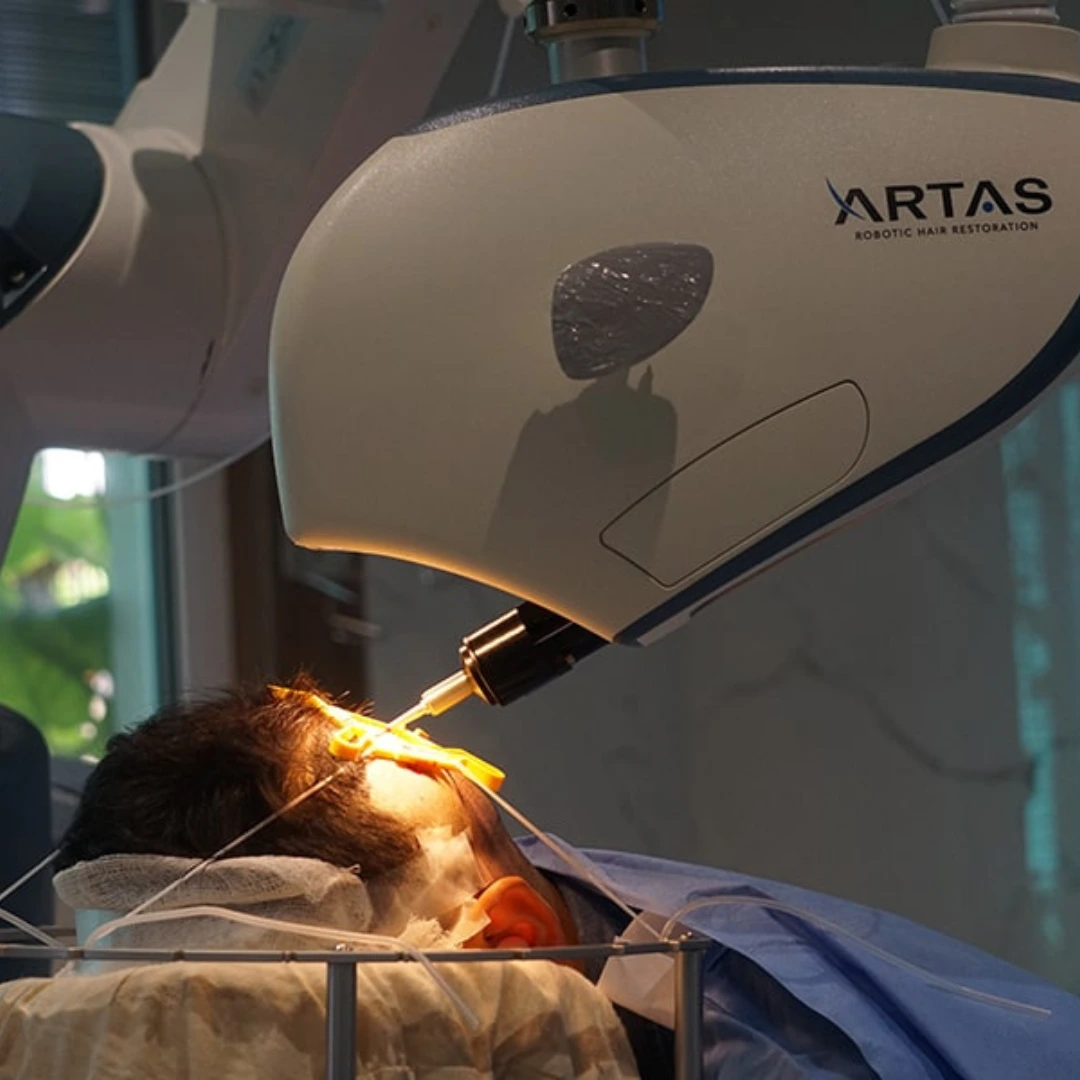
Success Stories of Hair Transplant at Musk Clinic
India's Only Premier Clinic for ARTAS® Robotic Hair Transplant Repair
Experience the next generation of hair restoration with the ARTAS® 9x Robotic System, exclusively at Musk Clinic. This advanced technology eliminates the guesswork and human error of manual procedures. For you, this means a faster, more comfortable experience and results so natural, no one will know you had a procedure done.
Ready to Experience Hair Transplant Repair?
Join hundreds of satisfied patients who have transformed their lives with ARTAS® technology at Musk Clinic.
ARTAS® Clinic in India
Graft Survival Rate
Faster Procedure
What Should You Consider Before Hair Transplant Repair?
How is Hair Transplant Repair Procedure Performed?
A hair transplant repair is a highly customized procedure performed with exceptional precision and artistry. While every patient's corrective journey is unique, the process generally follows four main steps.
Techniques to Provide the Best Hair Transplant Repair?
To provide the best Hair Transplant Repair, Clinics typically utilize these 2 most popular techniques:
FUE is a minimally invasive technique where individual hair follicles are extracted from the donor area (usually the back or sides of the head) and transplanted to the recipient area. This technique leaves tiny scars that heal quickly, making it popular among patients.
Advantages:
- Less Scarring: FUE leaves minimal scarring at the donor site, making it a cosmetically desirable option for many.
- Faster Healing: Due to the minimally invasive nature, FUE generally boasts quicker healing times.
- Larger Donor Area: Hair follicles can be harvested from a broader area on the scalp compared to FUT.
- Location: Costs may vary slightly depending on the clinic’s location within India. Tier-1 cities might have slightly higher costs compared to smaller towns.
FUT involves removing a strip of scalp from the donor area and dissecting it into individual follicular units for transplantation. This method can yield a higher number of grafts in a single session but leaves a linear scar that requires sutures.
Advantages:
- Cost-effective: FUT is generally less expensive than FUE.
- Faster procedure: For larger grafts, FUT can be a quicker procedure compared to FUE.
What is the Recovery Process After Hair Transplant Repair?
Let's walk through the healing timeline together to ensure a successful and comfortable recovery.
You can return to most daily activities, but rest is your priority. You'll experience mild swelling and tenderness as your scalp begins its healing journey.
Scabs will form and naturally fall off. We'll provide detailed guidance on how to wash your hair gently during this sensitive period.
The "shedding phase" begins—this is completely normal! The transplanted hairs will fall out, but the follicles underneath remain safe and are preparing for new growth.
New, fine hairs will begin to sprout, marking the start of your transformation. This is when you'll first see the promise of your new look!
You'll notice significant growth and increasing density as your hair continues to strengthen and thicken. The excitement builds!
Your final, spectacular results are visible! The hair will have matured in both thickness and length, giving you the full, natural-looking results you've been waiting for.
How Much is the Success Rate of Hair Transplant Repair in India?
Hair Transplant Repair in India has a high success rate up to 98%. However, the success rate always depends on individual factors, circumstances, and the expertise under which it is performed.
Musk Clinic has a proven record of successful Hair Transplant Repair treatments with great outcomes. With our detailed attention to a patient’s current circumstances and safety measures, we ensure to deliver the best Hair Transplant Repair solutions with a success ratio of 95-100%.
What is the Cost of Hair Transplant Repair in India?
The cost of Hair Transplant Repair in India is quite affordable compared to that in other developed nations, making it an attractive destination for individuals seeking this procedure. India has gained recognition for offering high-quality Hair Transplant Repair Treatment 5-6 times lesser that meet international standards at a fraction of the cost found elsewhere.
The price of a Hair Transplant Repair in India typically depends on various factors associated with the procedure. Key factors influencing the cost include the number of hair grafts needed to cover the bald area. Each hair graft generally costs varying based on factors such as the clinic’s reputation, the expertise of the hair transplant surgeon, and its location.
Musk Clinic is one of the top hair transplants clinics in India, offering the best hair loss solutions in India.
The affordability, combined with the availability of skilled surgeons and world-class facilities, has made us the best place for Hair Transplant Repair, attracting individuals from around the world seeking effective solutions for hair loss.
Know Your Hair Transplant Repair Cost Today!
Factors That Decide the Cost of Hair Transplant Repair in India?
Ethical Considerations for Hair Transplant Repair
Patients deserve ethical care during Hair Transplant Repair procedures. They should expect:
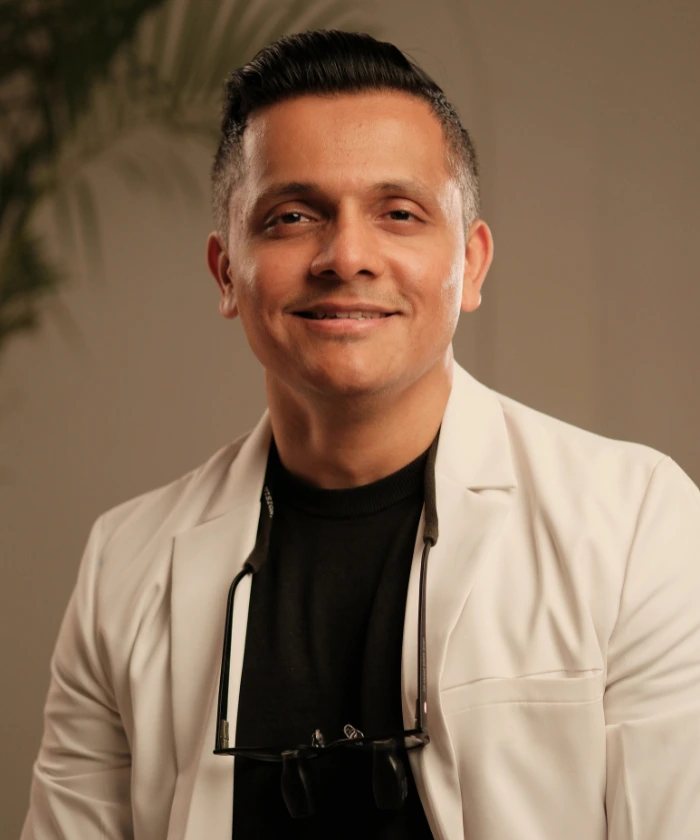
Dr. Anand Shah: The Professional Behind Robotic Hair Transplant with ARTAS 9X
Dr Anand B. Shah, is a board-certified Maxillofacial & Craniofacial surgeon who is highly skilled in cosmetic facial and hair restoration surgery and has exclusively practised the same, internationally and nationally. His career span has been marked with passionate and focused learning, keen and industrious training and in-depth guidance by some of the world’s best leading experts in the field of Hair Restoration. Following his post-graduation, Dr Shah underwent a highly reputed fellowship in Craniofacial Surgery under GCCRI which is affiliated with DCKH (Deutsche Cleft Kinder Hilfe), Germany. It was during his fellowship tenure that Dr Anand developed a keen interest in Hair Restoration Surgery under the esteemed guidance of fellowship director Dr Shyam Sheth.
He underwent a surgical preceptorship in orthognathic surgery from ‘UZ Brussel’ University, Belgium under Dr Maurice Mommaerts.
Read MoreRecognized Physician Memberships



Recognized By
Why Choose Musk Clinic?
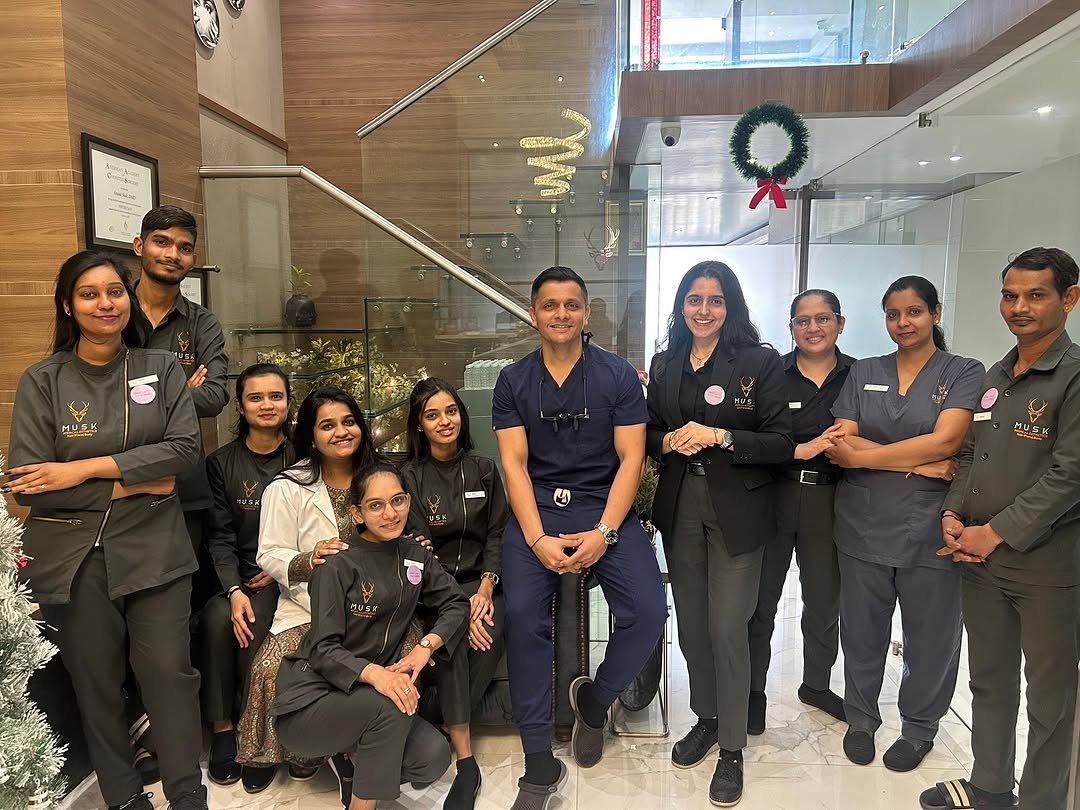
Real People. Real Care. Real Results.
At Musk Clinic, excellence is never a solo effort.
We are a team of skilled doctors, experienced surgeons, certified therapists, and compassionate staff—working together to deliver world-class care in Robotic Hair Transplants, Advanced Skin Treatments, and Body Aesthetics.
With cutting-edge technology and a shared vision of delivering results with care, our team ensures every patient feels confident, comfortable, and cared for at every step of their transformation journey.
When you choose Musk Clinic, you're not just choosing a treatment—you're choosing a team that's committed to your well-being and success.









